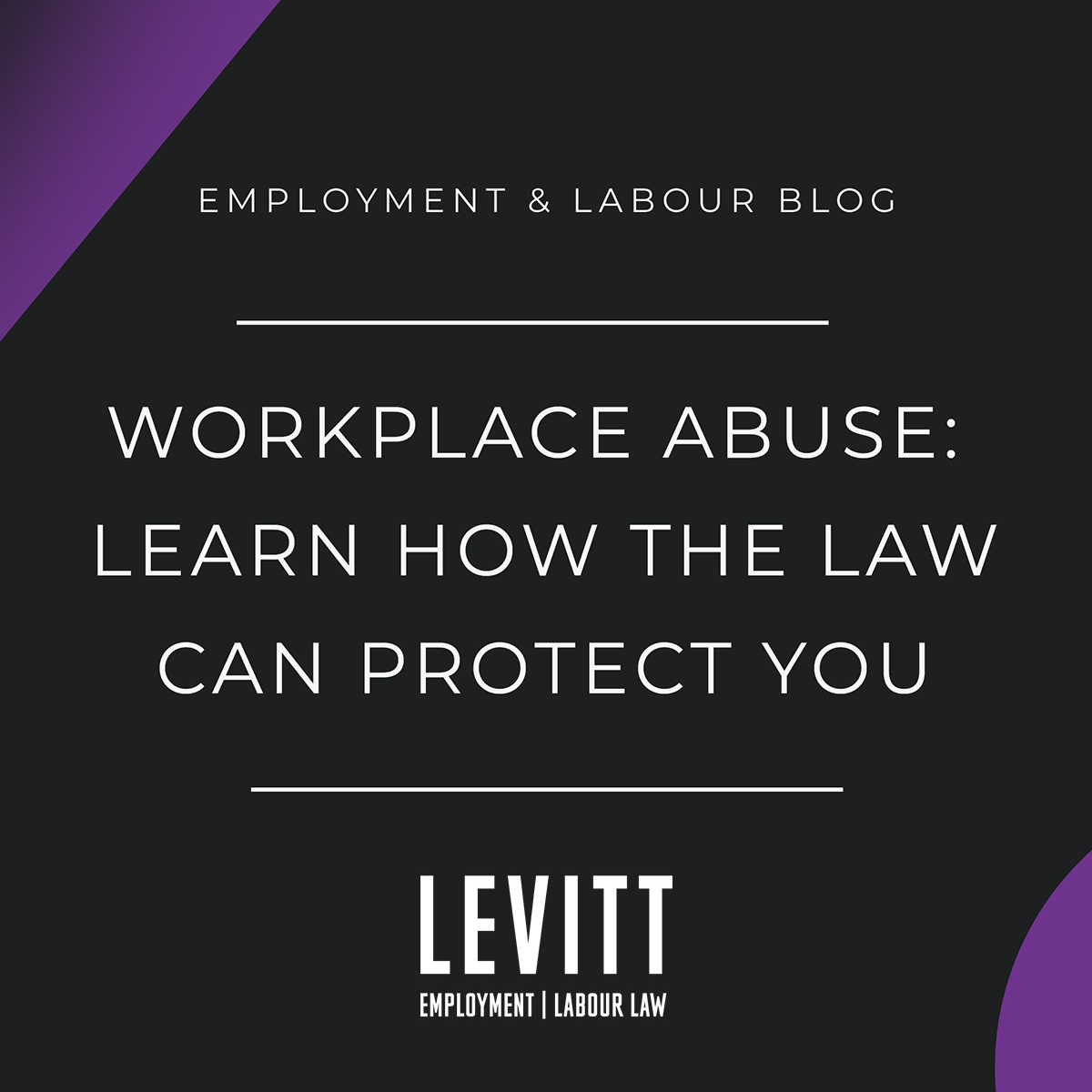What is Workplace Abuse?
Workplace abuse can take many different forms (emotional or physical), but generally can be described as conduct that causes an employee emotional or physical harm. Some examples of workplace abuse include:
- Bullying (e.g. insults, put-downs, name calling)
- Violence
- Discrimination
- Harassment and sexual harassment
- Unreasonable or impossible work demands
- Shouting or using profanity
- Intimidation (e.g. threating job security, position, promotion opportunities)
- Humiliation
- Undeserved discipline
- Sabotaging completed work or discounting accomplishments
- Withholding necessary information or providing incorrect information
Identifying the Workplace Abuse You Are Experiencing
Some forms of workplace abuse are more difficult to identify than others. Being repeatedly beat up by a coworker is a pretty clear case of workplace abuse, but what if your boss subtly suggests that your position might be ‘on the line’ if you can’t complete a big task by the end of the day? What if a jealous coworker tries to sabotage your projects or spreads degrading rumors about you?
It is helpful when employees can identify the type of workplace abuse they are experiencing so that they can better understand how the law protects them. For example, harassment and discrimination are not necessarily the same. Harassment is an umbrella term which covers things such as bullying, intimidation, sexual harassment, humiliation and so forth. Discrimination, on the other hand, is the unjust or prejudicial treatment of an individual based on an individual’s race, colour, ethnic origin, sex, gender, religion, disability, or family status. Therefore, not all harassment is necessarily discriminatory.
For example, if your boss is questioning your commitment to the company and demotes you because you decided to start a family, this would be discrimination based on pregnancy/ family status and would be protected under section 5 of the Ontario Human Rights Code. However, if your boss questioned your ability to do your job and belittles you because you have tattoos, because tattoos are not a protected ground from discrimination, you would instead be protected from harassment under Ontario’s Occupational Health and Safety Act.
This can certainly get confusing, as many types of harassment are also discrimination. Sexual harassment, for example, is considered discrimination based on sex as well as harassment and is therefore protected by both pieces of legislation. If you are unsure if what you are experiencing is workplace abuse, or you want to learn more about what your rights are and how you can assert them, a consult with an employment lawyer could be helpful.
Harassment Usually Has to Be Ongoing, But Not Always
Workplace harassment under the OHRC and the OHSA is defined as “engaging in a course of vexatious comment or conduct that is known or ought reasonably to be known to be unwelcome”. In other words, harassment is conduct that takes place more than once, and that the perpetrator knows (or a reasonable person would know) that the conduct is unwelcome.
However, conduct does not necessarily have to happen more than once to be considered harassment. In Murchie v. JB’s Mongolian Grill, the court held that a single incident could be considered harassment where it involves putting one’s hands on the body of another in a sexual way—in this case it was the flicking on an employee’s nipple. Similarly, in Xu v. Quality Meat Packers Ltd. the court held that a demeaning act that is premeditated can be considered a single incident that amounts to harassment—in this case it was a photograph brought to work that was allegedly of the complainant’s genitals, which was then circulated around the office.
Write It Down!
If you believe you are experiencing workplace abuse, it is smart to document every time this happens, including: the date the abuse took place, who was doing it, what happened, and any steps you might have taken after—such as reporting it to your boss and how they responded.
This information can later be used when reporting the incident of abuse to management, or the information can be given to your employment lawyer to support your case if you decide to seek legal advice.
Please note that this article is only to be used as general information and it does not constitute legal advice. We encourage employers and employees to contact Levitt LLP directly to better understand vaccination-related issues and seek legal advice to their questions.

